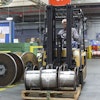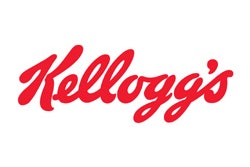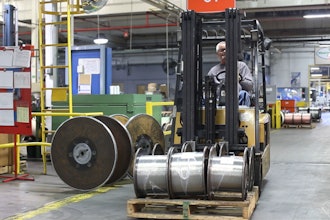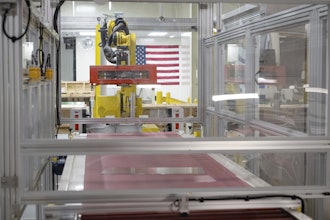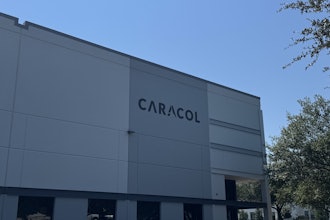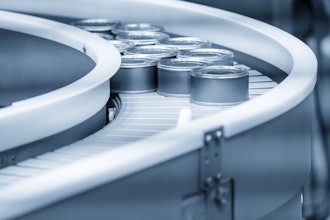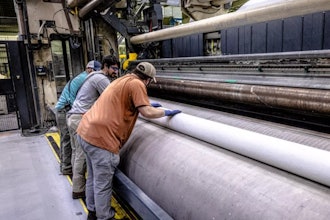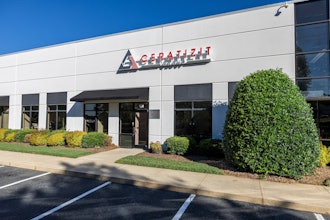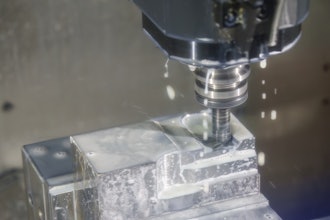Natural gas is used as an industry heat source in the production of fabrics, plastics, paint, fertilizers and food. It’s also used in the production of chemicals in a wide range of industries. In recent years, nearly 30 percent of all natural gas consumption in the United States has been a result of industrial applications. In any facet of the manufacturing industry, plant operators aim to reduce costs in order to increase profitability. This includes minimizing natural gas consumption.
One major use of natural gas in the chemical industry is steam reforming, which converts natural gas into hydrogen and carbon oxides. The steam reforming process utilizes natural gas both as a reagent as well as the fuel source to heat the reactors in this energy-intensive process. One function of the carbon monoxide and hydrogen produced by this process is for the synthesis of methanol. Methanol is the building block for hundreds of chemicals and an even longer list of products. Since natural gas is the primary ingredient in many plant operators’ chemical production process, any technique that reduces natural gas consumption results in significant cost savings.
CPIngredientes, a food ingredients manufacturer in Guadalajara, Mexico, uses hydrogen produced by steam reforming natural gas to hydrogenate food ingredients. In the past, the company heated traditional ceramic pellet catalysts inside its reformer tubes during the hydrogen production process. However, CPIngredientes found this method wasn’t efficient enough. The company wanted to utilize a more cost-effective method in its hydrogen production process — one that would also provide a longer operational lifetime for catalysts and reformer tubes.
The reformer configuration at the plant is typical for a food ingredients facility, consisting of reformer tubes of varying ages, several of which had been recharged with the outdated ceramic pellet catalyst method as recently as January 2012. After thorough study and analysis, plant management selected Stackable Structural Reactor (SSR®) steam methane reforming catalysts.
Transitioning to a foil-supported, heat-exchanging steam methane reforming catalyst turned out to be the answer CPIngredientes wanted. Completed in May 2012, data logged during the first four months of plant operation with the new catalyst is showing decreases in natural gas consumption of up to 30 percent, corresponding to an increase in plant efficiency.
“Our approach to improving plant efficiency and performance involves coating a proprietary high-performance catalyst onto engineered foil supports (“fans”) designed to deliver superior heat transfer at the same or lower pressure drop than traditional ceramic pellet catalysts,” stated Don Lensner, sales manager at Catacel, the company that developed SSR technology.
SSR’s increased heat transfer ability enables the operator to reduce furnace temperatures, consequently producing overall energy savings and extended tube and furnace life. In addition, the fans are engineered to provide a reactive surface area that is about 2.5 times greater than typical of ceramic media. The higher surface area ensures that more active ingredient is available to the reaction, and predictably to a longer catalyst life.
Installation of the SSRcatalyst was accomplished in 3-foot long sections of fans delivered to the plant site and inserted into the reformer tubes. Once in place, each section of SSR was expanded to conform the individual SSR fans to the specific internal geometry of each tube. This installation required 72 sections comprising a total of nearly 2,000 SSR fans, which were installed over a two-day period.
Success Factors
Initial reporting for CPIngredientes at 100 percent plant rate with SSR indicated a 13.5 percent reduction in natural gas consumption by the reformer burners over the nominal values of previous months and years of operation. However, readings taken in the following months and at various plant rates demonstrate burner fuel reductions of up to 30 percent, consequent reduction to reformer temperature, as well as improvement to overall plant efficiency. Based on current natural gas pricing in Mexico, ROI for the entire solution based only on fuel savings is within 2.1 years.




